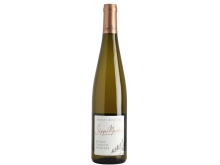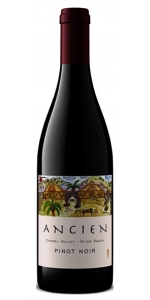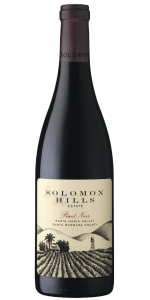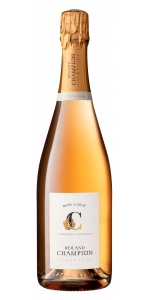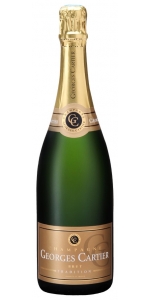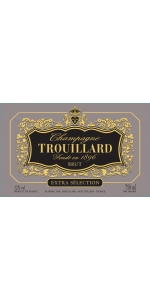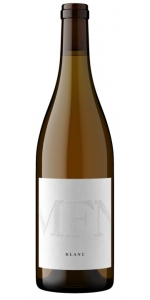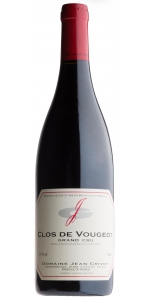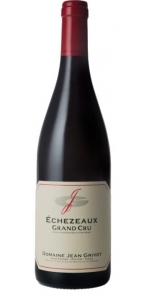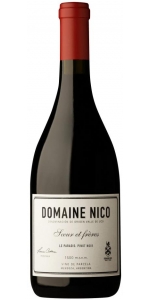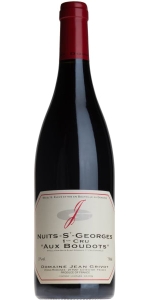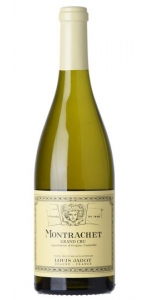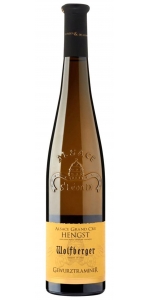Domaine Sipp Mack Alsace Pinot Gris Grand Cru Rosacker 2016
6 bottles with free shipping for: $300.00
12 bottles with free shipping for: $558.00
| BUY MORE! SAVE MORE! | ||||||||||||||||||||
|
| Country: | France |
| Region: | Alsace |
| Winery: | Sipp Mack |
| Grape Type: | Pinot Gris/Pinot Grigio |
| Vintage: | 2016 |
| Bottle Size: | 750 ml |
Domaine Sipp Mack Alsace Pinot Gris Grand Cru Rosacker is made from 100 percent Grand Cru Pinot Gris.
Rigor and diligence were the key words for this emotional 2016 vintage!
The year starts with heavy rainfall and low temperatures, severely delaying the growing cycle. The month of May sees temperatures increase and the tropical atmosphere favors the development of mildew. Finally, the dry and sunny summer allowed our heavy soils to avoid maturity blockages linked to water stress. The 2016 harvest started in early September and ended 7 weeks later, a record!
In the cellar, the sanitary condition was very good, the wines developed freshness, complexity and fine, ripe acidity.
SITUATION
Fresh notes of mango and peach, enhanced by a sweet sensation, dominate the palate. The finish is long thanks to a lively acidity. It will go perfectly with white meats, firm fish and cheeses with character.
Review:
Ripe, pristine notes of yellow pear on this wine's nose come with notions of creamy banana and vanilla. The palate carries rich, concentrated fruit, but in a precise fashion that channels the rounded ripeness into smooth generosity. A vein of freshness and smidge of sweetness give the fruit staying power and verve. Together they present an off-dry wine with immense potential and elegance. Drink by 2045.
-Wine Enthusiast 94 Points
An exceptional environment
The vineyards surrounding Hunawihr whisper the timeless story of the village’s cherished bond with the world of wine. As you wind your way up the picturesque, narrow streets, you can appreciate the Alsace traditions passed down over the centuries as they seep from the timber-framed, geranium-bedecked homes.
Nestled at the top of the village, you will find Sipp Mack, a 9th generation family winery, currently run by Laura and Jacques Sipp with their daughter, Carolyn.
Generational winemaking relays
The Sipp Mack winery was created in 1959 following the marriage of two winemaking families, François Sipp from Ribeauvillé and Marie Louise Mack from Hunawihr. In 1983, following his viticulture and enology studies, business school and work experiences in American wineries for 2 years, their son, Jacques, returned to Alsace to join the family estate. He brought his wife, Laura, a Californian graduate from the University of California Davis wine program, back with him.
Jacques and Laura brought new vision to the vineyard and winery operations. Their desire to make consistently high quality, pure wines that reflect their soils led them to combine Alsatian traditions with modern technology and production methods that protect the environment. After years certified sustainable farming and integrated pest management, they converted the entire domain to certified organic farming.
Today, a new breeze flows through the family winery with the arrival of their daughter, Carolyn. Her dynamism and creative ideas enrich and consolidate the domain’s artisanal viticulture and winemaking approach.
Rooted in history yet open to the future, each generation brings initiatives and encouragement to the preceding generation while nourishing each other with their experience.
A modern vision
By recognizing the value of team work among their staff, they strive to create a fulfilling and dynamic work atmosphere.
Not surprisingly, Sipp Mack has evolved over the years. Fifty percent of the wines produced are now available in several export markets. In spite of the relatively rapid changes, the estate has managed to keep its family-oriented nature and its appreciation of its rich heritage. Locals, wine amateurs from near and far, and tourists looking for “the road less traveled” enjoy sharing conversations (often multilingual!) around the tasting room table, surrounded by beautiful artifacts from the past nine generations.
GRAND CRU ROSACKER – HUNAWIHR
Named after the wild roses growing along its border, the Grand Cru Rosacker vineyards extend to the north of Hunawihr over a surface of 26.18 Ha (64.7 acre). The vineyards face east-south-east at an altitude between 260 and 330m. The soil, a heavy, grey limestone with intertwined layers of marl (calcareous clay), is very rich in calcium and magnesium.
Sipp Mack cultivates 2.10 Ha (5.2 acre) of Riesling Grand Cru Rosacker.
Young, the Riesling Rosacker has a racy, firm temperament with a sharp, peppery aroma that mellows with age. The wines reveal full strength over time, expanding in depth, unveiling complex, yet subtle mineral flavors, which are characteristic of Rieslings from great terroirs.
GRAND CRU OSTERBERG – RIBEAUVILLÉ
The Grand Cru Osterberg vineyards are located on the steep, sun-drenched, east-south-eastern slopes of Ribeauvillé at an altitude between 250 and 350 meters. They cover 24.60 Ha (60.8 acre) and have stony, clay-over-marl soils.
Sipp Mack’s Grand Cru Osterberg fields, around 0.84 Ha (2.1 acre), are planted in Riesling and Pinot Gris.
The Riesling Osterberg is opulent, and a touch sweeter and richer than the Grand Cru Riesling Rosacker. With age, it develops a strong body, a wonderfully subtle aroma, and an outstanding mineral character. It is a perfect wine for aging.
The Pinot Gris Osterberg is complex and powerful, with rich fruit sweetness. This richness is perfectly balanced with a good acidity, giving the wine elegance and finesse. The Pinot Gris Osterberg also may be kept for 10 years before drinking.
Ancien Pinot Noir Carmel Valley River Ranch is made from 100% Pinot Noir.
River Ranch Vineyard from suitcase clone of famous vineyard, mother block to the Pisoni clone as well.
Spice, tea, and plum and blackberry aromas dance atop currants and boysenberry pie. The opulence continues with secondary notes of chocolate and black tea that lead to satisfying elegant finish revealing jasmine. The finish is mouthwatering and long with presenting umami, soy, and Asian spice. Planted to the same special cuttings as our block at the Toyon Farm in Carneros, they are a joy tasting side by side, illustrating the profound influence of terroir.
Pair with Asian, pork with hoisin sauce, savory foods.
Review:
"Sourced from a vineyard of imported Burgundian cuttings planted back in 1982, this is a complex Pinot Noir, offering concentrated aromas of blueberry, palo santo and warm vanilla on the nose. The palate is joyous in cherry and baking-spice flavors, then picks up an herbaceous eucalyptus leaf kick before dropping into a spicy, Sichuan peppercorn-laced finish. - M.K."
- Wine Enthusiast (February/March 2024), 95 points + Editor's Choice
Solomon Hills Estate Pinot Noir is made from 100 percent Pinot Noir.
Solomon Hills Pinot Noir is always distinctive and singular in its ability to harness the Coastal influence of Santa Maria Valley. Earth tones alongside briar bush and blueberries contrast aromas of forest floor and fired red clay. The noticeable savory elements of cracked black pepper and teriyaki beef nicely balance ripe cherries and blackberries on the palate.
Review:
I loved the bouquet of the 2021 Pinot Noir Solomon Hills, a light ruby-hued effort with perfumed darker cherry, mulberry, leafy herb, and smoked earth nuances. It's medium-bodied, has a layered, seamless texture, integrated tannins, and a gorgeous finish. It's absolutely brilliant. Enjoy bottles over the coming decade or more.
-Jeb Dunnuck 96 Points
Roland Champion Champagne Brut Rose Grand Cru NV is the blend of 33% Chardonnay, 33% Pinot Meunier and 33% Pinot Noir.
The Champagne rose shows an orange salmon color coming from the red wine base. The pinot meunier brings red fruit aromas of strawberry and raspberry with hints of spices. The palate is juicy and harmonious with good depth and minerality. A delicate balance between Chardonnay, Pinot Meunier and Pinot Noir.
It is a blend of 93% White juice (made from 33% Chardonnay, 33% Pinot Meunier and 33% Pinot Noir) and 7% Pinot Noir red wine. The grapes used to produce the Coteaux Champenois red wine are coming from their vineyards near the Village of Verneuil.
Georges Cartier Champagne Brut Tradition NV is made from 65% Pinot Meunier, 25% Pinot Noir, and 10% Chardonnay.
This champagne was made to reflect the potential of each grape growing areas of the Champagne region.
The grapes for Georges Cartier Brut Tradition have been carefully selected from the 3 emblematic areas of Champagne. Chardonnay is sourced from the Côte des Blancs, Pinot Noir from Montagne de Reims and Pinot Meunier from the Marne Valley.
Each grape variety brings its own character and specific quality to the wine: Pinot Meunier brings fruit and roundness, Pinot Noir brings character, power, structure and balance, while Chardonnay contributes to the finesse, minerality and elegance of the result wine.
The blend in 2022 will be 70% 2018 vintage and 30% of reserve wines (consisting of 2014, 2015 and 2016 vintages).
It will be RD (meaning "Recently Disgorged") to keep freshness, fruitiness, minerality and elegance.
Review:
"A blend of Pinot Noir, Pinot Meunier, and Chardonnay. Lemon drop and buttercup combine with lime sorbet. Bubbles burst with ease and the wine’s mineral tone keeps the palate cleansed."
- The Tasting Panel (May/June 20022), 93 pts
Trouillard Brut Extra Selection NV is selected from 15 different vineyards located in the Marne Valley, in the Aube and the small Mountain of Reims.
Trouillard Brut Extra Selection NV is made of 35% Pinot Noir, 35% Pinot Meunier, 30% Chardonnay.
With a light amber color with fine bubbles, full-bodied with a full mixture of white fruits. Dominating taste of hazelnuts and grilled almonds. This crisp, delicate, fresh, creamy and elegant champagne, with just a touch of yeastiness, is sure to enhance any special occasion or meal. A very classic and delicate Brut.
Review:
"Medium gold color with a rich, seductive nose of roasted grains. Shows an elegant attack and a very fine, rich mousse. Finishes very dry but long. Dried lemon peel and toasted bread are evident on the richly textured palate with notable mineral character. Finishes very dry and long."
International Wine Review 92 pts
Guide Michelin 2013, **
A deep and rich hue of golden straw gives the first clue that this is a serious Chardonnay. Aromas of pear, green apple, and lime peel jump out of the glass followed by more nuanced fragrances of orange blossom, ginger root, and brioche. The sensation on the palate casually demonstrates both broad depth and laser like focus. An assertive core of acid and saline minerality rests completely ensconced in rich flavors of pie crust, clotted cream, and burnt caramel. Drink now for fresh vibrance, or in ten years for wild complexity. This wine is a perfect white to be enjoyed year-round.
Review:
The 2021 MFN Blanc Chardonnay is very ripe in style with scents of banana chip, apple pie, jasmine, allspice and brown sugar. The full-bodied palate is packed with ripe, spicy fruits and plenty of refreshing acidity, and it finishes long with a satiny, mouth-coating texture. It's an old-school style reminiscent of Napa that fans of ripe, oaked Chardonnays will enjoy.
-Robert Parker 97 Points
Domaine Jean Grivot Clos de Vougeot Grand Cru is made from 100 percent Pinot Noir.
Domaine Jean Grivot is among the great names in Burgundian wine. Étienne Grivot and his wife Marielle took over from Étienne’s father Jean Grivot in 1987. The vineyards are densely planted and farmed organically “sans certification” while the aim in the cellar is for balance and clear expression of terroir.
Jean Grivot’s 38.3 acres spread across 22 appellations with vineyards in the communes of Vosne-Romanée, Vougeot, Chambolle-Musigny, and Nuits-Saint-Georges. Besides the three grand crus, there are 8 premier crus including the much lauded Les Beaux Monts and Suchots in Vosne-Romanée. The grapes are completely de-stemmed and fermentation is spontaneous.
About the Vineyard:
Clos de Vougeot grand cru was acquired by Étienne’s grandfather, Gaston Grivot, in 1919. The total holding is 4.6 acres from the middle of the vineyard to the lower wall and the average vine age is 40 years old. A good Clos de Vougeot should be a complete wine without any one feature standing out. It is a perfect balance of power, aroma, and flavor.
Wine Production:
The grapes are destemmed and maceration à froid usually lasts just a day or two. The alcoholic fermentation is spontaneous and malolactic fermentation occurs in barrel. Depending on the vintage, the proportion of new oak is around 40-70% percent for the grands crus.
Tasting Notes:
The wine shows aromas and flavors of red berries, herbs, and purple flowers. The palate is rich with ripe fruit and medium weight with bright acidity and fine tannins. Aging in 40-70% new Burgundian pièce brings notes of vanilla, toast, and baking spices.
Food Pairing:
Red Burgundy might be the world’s most flexible food wine. The wine’s high acidity, medium body, medium alcohol, and low tannins make it very food-friendly. Red Burgundy, with its earthy and sometimes gamey character, is a classic partner to roasted game birds, grilled duck breast, and dishes that feature mushrooms, black truffles, or are rich in umami.
Review:
This round version is packed with ripe black cherry, violet, graphite and tobacco flavors. The silky texture and vibrant acidity work in tandem, while refined tannins provide support without getting in the way. There are a few edges to be worked out, yet this is long and concentrated.
-Wine Spectator 95 Points
Domaine Jean Grivot Echezeaux Grand Cru is made from 100 percent Pinot Noir.
Domaine Jean Grivot is among the great names in Burgundian wine. Étienne Grivot and his wife Marielle took over from Étienne’s father Jean Grivot in 1987. The vineyards are densely planted and farmed organically “sans certification” while the aim in the cellar is for balance and clear expression of terroir.
Jean Grivot’s 15.5 hectares spread across 22 appellations with vineyards in the communes of Vosne-Romanée, Vougeot, Chambolle-Musigny, and Nuits-Saint-Georges. Besides the three grand crus, there are 8 premier crus including the much lauded Les Beaux Monts and Suchots in Vosne-Romanée. The grapes are completely de-stemmed and fermentation is spontaneous.
About the Vineyard:
Echézeaux grand cru is a large vineyard of 38 hectares divided into 11 individual climats. Grivot’s parcel is in the climat of Les Cruots and lies at the southern end of Echézeaux near the premier cru of Les Suchots. A good Echézeaux should have rich fruit, considerable earthiness, and be very complete on the palate.
Tasting Notes:
The wine shows aromas and flavors of red berries, herbs, and purple flowers. The palate is rich with ripe fruit and medium weight with bright acidity and fine tannins. Aging in 40-70% new Burgundian pièce brings notes of vanilla, toast, and baking spices.
Food Pairing:
Red Burgundy might be the world’s most flexible food wine. The wine’s high acidity, medium body, medium alcohol, and low tannins make it very food-friendly. Red Burgundy, with its earthy and sometimes gamey character, is a classic partner to roasted game birds, grilled duck breast, and dishes that feature mushrooms, black truffles, or are rich in umami.
Review:
A very elegant expression of Echezeaux, with a velvety black plum and rose petal fruit. There is a lovely freshness and so much finesse that the tannin and structure might surprise you at the end. This has the substance to age for decades. Produced from a 0.84ha parcel in Cruots next to Comte Liger-Belair. The vines were planted in 1954 and the destemmed fruit was gently fermented.
This is pure, racy and enticing, hosting aromas and flavors of black currant, blackberry, violet and iron. This is about finesse, grace and precision balance, with saturated fruit flavors persisting on the superlong aftertaste. Needs a decade in the cellar.
-Wine Spectator 97 Points
Domaine Nico le Paradis Pinot Noir is made from 100 percent Pinot Noir.
The cool climate vineyard that belongs to Laura and her sister Adrianna Catena feels like paradise itself to Laura. It is lined by trees and fruit orchards, with majestic views of the Andes. Inside the 12 Hectare vineyard, there is a little house with two tiny bedrooms and a kitchen, where Laura dreams of spending a whole month reading books-Laura's version of paradise. The little house is affectionately named Chateau Laura. About the Vineyard The tiny parcel where Le Paradis is grown was planted in 2011 with Dijon 667 Clones over two acres. Wine Production The grapes from this small parcel were elaborated in 15 separate microvinifications.
All the microvinifications were fermented with indigenous yeast. 20% of the microvinifications were fermented with 100% whole clusters in oak roll-fermentor of 600L and low temp (22 Celcius degrees). 40% were fermented with 20% whole cluster in small vats of 800L and 40% fermented in small vats of 800L without sulfites until 4%V/V of alcohol.
Review:
From soils rich in calcium carbonate and sand, in a vineyard 1,600 meters above sea level, this wine comes from a selection of 2.7 hectares that produced very little fruit in 2016, just barely enough to fill 800 bottles. But watch out for this white, with its edge, its minerality, those saline notes that are so characteristic of chardonnay from the chalky Gualtallary soils. The wine was aged for a year in used barrels, and it has some of the toast, but here it’s the deep minerality that dominates.
Patricio Tapia - Descorchados 96 Points
Domaine Jean Grivot Nuits-Saint-Georges Premier Cru Aux Boudots is made from 100 percent Pinot Noir.
Domaine Jean Grivot is among the great names in Burgundian wine. Étienne Grivot and his wife Marielle took over from Étienne’s father Jean Grivot in 1987. The vineyards are densely planted and farmed organically “sans certification” while the aim in the cellar is for balance and clear expression of terroir.
Jean Grivot’s 38.3 acres spread across 22 appellations with vineyards in the communes of Vosne-Romanée, Vougeot, Chambolle-Musigny, and Nuits-Saint-Georges. Besides the three grand crus, there are 8 premier crus including the much lauded Les Beaux Monts and Suchots in Vosne-Romanée. The grapes are completely de-stemmed and fermentation is spontaneous.
Nuits-Saint-Georges Aux Boudots 1er cru lies in the “Zone Vosnoise” or northern end of Nuits-Saint-Georges just below Les Damodes. It borders Vosne-Romanée Aux Malconsorts 1er just to its north. Its position slightly lower on the slope with deep soil full of pebbles results in a richer and fuller wine.
The grapes are destemmed and maceration à froid usually lasts just a day or two. The alcoholic fermentation is spontaneous and malolactic fermentation occurs in barrel. Depending on the vintage, the proportion of new oak is around 30-60% for the premier crus.
The wine shows aromas and flavors of red berries, herbs, and purple flowers. The palate is rich with ripe fruit and medium weight with bright acidity and fine tannins. Aging in 30-60% new Burgundian pièce brings notes of vanilla, toast, and baking spices.
Red Burgundy might be the world’s most flexible food wine. The wine’s high acidity, medium body, medium alcohol, and low tannins make it very food-friendly. Red Burgundy, with its earthy and sometimes gamey character, is a classic partner to roasted game birds, grilled duck breast, and dishes that feature mushrooms, black truffles, or are rich in umami.
Reviews:
‘The 2020 Nuits Saint-Georges Aux Boudots Ter Cru has the best aromatics among Grivat Nuits Saint-Georges with very well defined red berry fruit, briary and lignt sous-bois aromas. The palate is medium-badied with fine-grain tannins, slightly savory on the entry, fresh and saline on the finish. This has real verve and class, though it will benefit from time in bottle
-Vinous 93-95 Points
A wine with the substance and structure to support the generous lashings of new oak used for maturation, and the overall effect is elegant and classic in style. Aux Boudots, where Grivot has 0.85ha, is at the northern edge of Nuits, just over the border from Vosne-Romanée Malconsorts. They began to pick on the 3rd of September – Etienne specified that they are very particular that the tannins are ripe and do what they can to prolong the vegetative cycle. Still, the grapes were picked with an entirely correct pH of around 3.4.
-Decanter 94 Points
Louis Jadot Montrachet Grand Cru is made from 100 percent Chardonnay.
Le Montrachet is situated to the south of the Côte de Beaune, on both villages of Puligny Montrachet and Chassagne Montrachet (like the Batard Montrachet Grand Cru).
The terroir is extremely chalky with a lot of stones, perfectly drained and easy to overheat with south-south-eastern exposition.
The Montrachet is produced with Chardonnay
Grapes are harvested by hand and put in small cases in order not to damage the fruits. Grapes are pressed softly, they ferment in oak barrels produced by our cooperage. 1/3 are new barrels. Aging usually lasts 15 months on fine lies before bottling.
Review:
Aromas of buttered toast, honeyed peaches, white flowers and mint introduce the 2019 Montrachet Grand Cru (Maison Louis Jadot), a full-bodied, layered and enveloping wine that's satiny and sumptuous, with lively acids and fine depth at the core. While I'd give the nod to the stunning Demoiselles as Jadot's best white wine this year, this Montrachet—purchased from the Chassagne-Montrachet side, from the house's usual source—is undeniably promising.
-Wine Advocate 94-96 Points
Wolfberger Alsace Grand Cru Hengst Gewurztraminer is made from 100 percent Grand Cru Gewurztraminer.
Hengst means stallion in alsatian.
Floral nose, yellow fruits, sweet spices. The mouth is ample with the same aromatic.
Tangential filtration before bottling.Vinification in stainless steel tanks at 16°C then aging on fine lees until spring of the following year.
Full-bodied cheese (munster, époisses), curry, dessert with fresh fruit
- back
Saumaize Michelin Pouilly Fusse Premier Cru La Marechaude is made from 100 percent Chardonnay.
A beautiful Pouilly-Fuisse from "La Marechaude" parcel that Saumaize-Michelin acquired in 2013. Planted on clay and limestone slopes and hand harvested, this Chardonnay offers fresh and elegant notes of white flowers, crisp, citrus and exotic fruits. Powerful and mineral on the palate with a fantastic balance, finesse and freshness. The exceptional terroir brings minerality and juicy flavors of stone fruits, peach and melon supported by subtle toasty notes.
It is now a Premier Cru.
Jasper Morris - Inside Burgundy 94 Points
Chavy-Chouet Volnay 1er Cru Sous La Chapelle is made from 100 percent Pinot Noir.
Total acreage for this wine: 0.1 hectare (0.25 acres)Planting density: 10 000 vines per hectares
Age of the vines: 10 years
At the bottom of the slope in the heart of Volnay, this plot lies on clay-sand soil.
Volnay is located on the steep sloping hill of Chaignot in the Côte de Beaune, where the southeast facing vines have been valued for centuries. These vineyards have been valued and exploited for centuries. Long before the French Revolution, the harvests of Volnay went to the Knights of Malta, the Abbeys of Saint-Andoche d’Autun and Maizières, or to the Dukes of Bourgogne and their successors, the Kings of France.
Volnay has a reputation for being among the most delicate, feminine of the Bourgogne wines. Limestone soil dominates the area, with deeper, gravelly soils at the foot of the slope, where Chavy Chouet’s vines are located.
This Volnay is full of character; broad and fruity. Smooth and elegant tannins make it a feminine wine, marked by aromas of black berries and leather.

